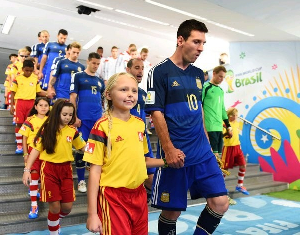
Football mascots have been a part of the game for decades now. These lovable characters have been entertaining fans and adding to the overall fun of the game since the early days of football.
But, over the years, football mascots have evolved and been reimagined in ways that nobody could have predicted. From the lovable and cuddly to the fierce and intimidating, football mascots have come a long way.
Football mascots have been a part of the sport for many years, and their evolution over time is truly fascinating. These colourful characters have been a source of entertainment and excitement for fans, young and old alike.
They are an integral part of the football matchday experience, often interacting with the crowd and adding to the overall atmosphere of the game.
In the early days of football, mascots were not as common as they are today. They were mainly seen in international tournaments such as the World Cup, where countries would have their mascots to represent them.
However, as football became more popular and commercialized, clubs began to adopt mascots of their own.
What Are The Reason?
Today, in most of the leagues throughout Europe, households are properly represented as fans.
This was once now not usually the case. In the pre-1980s, soccer followers going to watch video games at the stadiums had been nearly completely male.
In some countries, violence and racist chants have been frequent throughout Europe.
In all honesty, with hindsight and our inclusive methods of thinking, the moves of some people, who are referred to as themselves fans, used to be very disgusting.
However, as the years have progressed, matters have changed, initiatives such as having teens strolling out with the gamers have helped make the world of soccer a great deal higher area to be. There are quite several motives why gamers stroll in with kids.
These consist of advertising kid's rights campaigns, bringing the aspect of innocence to the game, pleasurable kids' dreams, or making an income from it (some mothers and fathers pay for equipment so that their youngsters can accompany gamers they look up to). Another motive is to shield the players. Fans are much less probable to throw things at the gamers if there are young people right beside them.
Initially, football mascots were straightforward, often taking the form of animals such as dogs and other domestic animals. Their purpose was to represent the club and add a bit of fun and excitement to the matchday experience. As time went on, however, mascots became more elaborate and began to take on more human-like characteristics.
Mascots have been an integral part of football games for decades. They are the representatives of the team, the face of the franchise, and the cheerleaders who keep the crowd engaged throughout the game. Mascots are more than just people in costumes; they are a representation of the spirit and energy of the team.
Mascots are responsible for creating a positive and lively atmosphere within the stadium. They keep the crowd entertained and engaged through their performances, dances, and funny antics. They are usually the first ones to step onto the field before the game begins, and the last ones to leave after the game concludes.
The role of mascots is not limited to just entertaining the crowd. They also serve as ambassadors for their teams and communities. Mascots are often involved in community outreach programs, charity events, and school visits. They are responsible for building the team's brand and creating a positive image in the eyes of the public.
